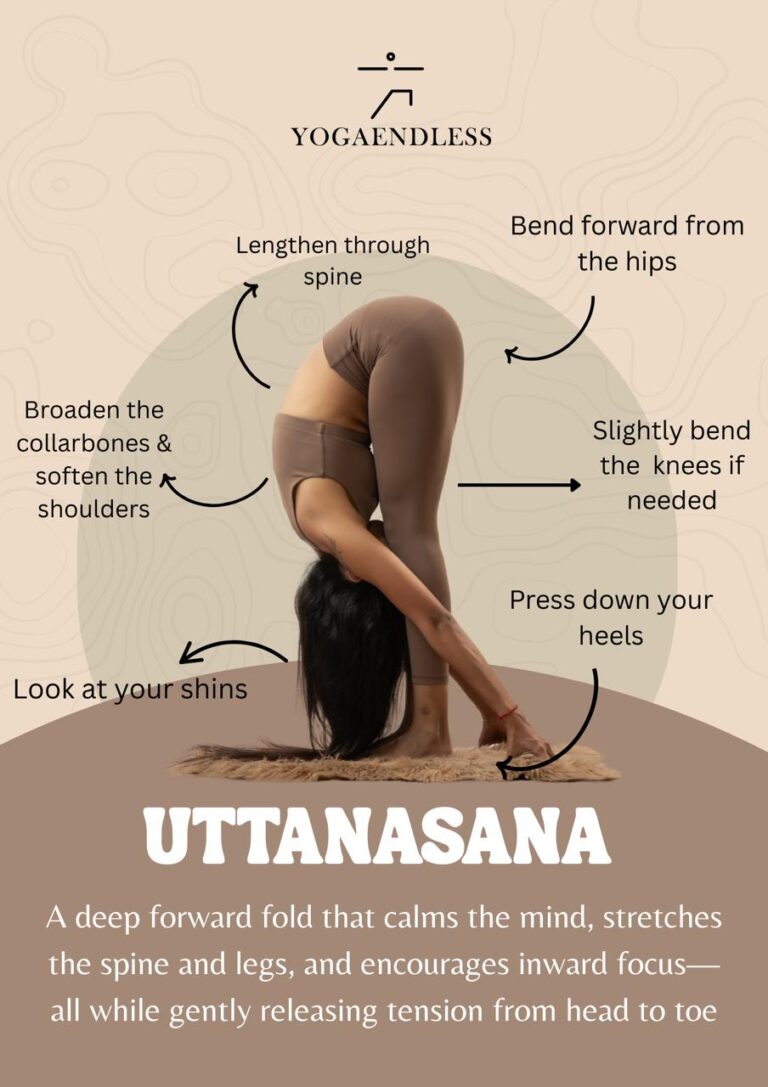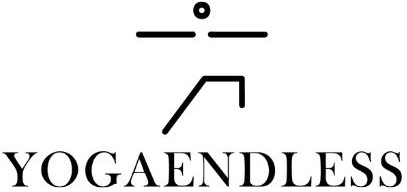Uttanasana (Standing Forward Bend): A Gentle Fold into Stillness

In the rush of modern life, Uttanasana, or Standing Forward Bend, offers a chance to pause, reflect, and release. This fundamental yoga pose gently stretches the entire back body while calming the nervous system. Often practiced early in a yoga sequence or as a resting pose, it connects breath with movement and mind with body.
Though it looks simple — just a forward fold — Uttanasana has profound benefits when practiced with mindfulness and proper alignment. It is a foundational pose in many yoga traditions and can be modified to suit every level of practitioner.
What Is Uttanasana?
From Sanskrit:
Ut = Intense
Tan = To stretch or extend
Asana = Pose
Uttanasana is often translated as the Intense Forward Stretch Pose or Standing Forward Bend.
Other common names include:
- Forward Fold
- Standing Forward Bend
- Intense Stretch Pose
How to Do Uttanasana (Step-by-Step Instructions)
- Stand in Tadasana (Mountain Pose) with feet hip-width apart, arms by your sides.
- Inhale and raise your arms overhead, stretching the spine upward.
- Exhale as you hinge from your hips, not the waist, and fold forward.
- Keep a slight bend in the knees, especially if your hamstrings are tight.
- Let your hands rest on the floor, blocks, or your shins — wherever they comfortably reach.
- Allow your head to hang heavy, relaxing the neck completely.
- Draw your belly gently in, and shift the weight slightly forward toward the balls of your feet.
- Stay for 5–10 breaths, breathing deeply and slowly.
- To come out, bend your knees slightly, engage your core, and roll up slowly to stand on an inhale.
Alternate Names for Uttanasana
- Standing Forward Fold
- Forward Bend Pose
- Intense Stretch Pose
- Standing Head-to-Knee (a more advanced variation)
What Not to Do (Common Mistakes)
- Don’t lock your knees. Keep a soft bend to protect joints and support the lower back.
- Avoid rounding the spine excessively. Keep the spine long and fold from the hips.
- Don’t force yourself to touch the floor. Use props or bend knees — flexibility will come with time.
- Avoid holding your breath. Maintain slow, even breathing.
- If you have back issues, consult a teacher and keep the bend gentle.
Tips for Beginners
- Use yoga blocks under your hands to maintain balance and proper spinal alignment.
- Keep knees slightly bent to avoid strain. As flexibility improves, legs can straighten gradually.
- Pair with breathing. Inhale to lengthen the spine, exhale to deepen the fold.
- Practice against a wall for support if you feel unsteady.
Uttanasana reminds us that strength and surrender go hand in hand. This humble fold invites you to look inward, release the burdens of the day, and return to a sense of grounded calm. Whether used as a transition, a warm-up, or a moment of pause, it is a pose that gently teaches patience, presence, and peace.
Bend not to break, but to bloom — inward, grounded, and whol
